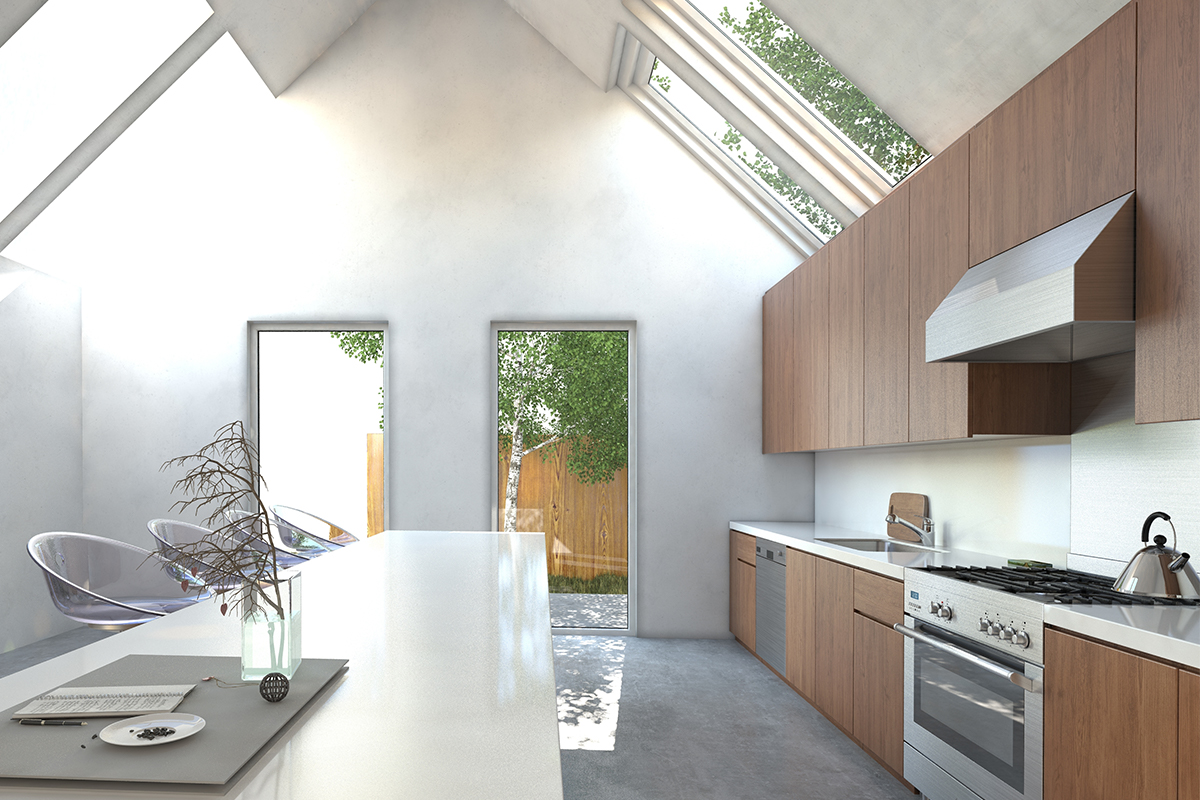
It’s time to take a closer look at the Prefab Home Trend. A Prefab Home may sound like a modern ambition, but they’re nothing new. Consider “Modern Home No. 187” listed in the Sears, Robuck & Co. catalog in 1913. The humble catalog advertised a remarkable 2-story house with a cobblestone foundation and matching chimney. This particular home was referred to as “an architectural triumph”. It was available for purchase as a kit to be assembled on a customer’s property. The price tag was $1,273.
What is a Prefab Home?
Prefab homes are built almost entirely inside a factory instead of traditional on-site construction.
What are the differences between Prefab Homes, Modular Homes, Kit Homes, and Manufactured Homes?
Prefab and Modular Homes
Prefab Homes and Modular Homes are basically the same types of homes, and the terms are fairly interchangeable. When a Prefab home is delivered to your property, the manufacturer will put all the factory-built pieces together. They pull in your utilities and plumbing and have your home air-tight and ready to be lived in typically within the same day. These homes are built on a permanent foundation and are typically built on private land.
Kit Homes
Kit Homes, on the other hand, are less expensive, but require a little extra effort on the part of the homeowner. The pieces are delivered to the property, and the homeowner is required to assemble the pieces on their own. It’s a bit like putting together a massive, complicated jigsaw puzzle. Fingers crossed you don’t have a piece missing when you’re done. Kit Homes are built on a permanent foundation and typically built on private lands, like Prefab and Modular Homes.
Manufactured Homes
A manufactured home typically refers to homes not built on a permanent foundation. A manufactured home, as described at nadaguides.com is built on a “permanent chassis to ensure transportability. However, typically a manufactured home is not moved from its initial installed site.”
The Benefits of a Prefab Home
- Prefab Homes are built in a fraction of the time it takes to build an on-site home. Building a home in a factory setting prevents common delays due to weather.
- The quality of the material used in a Prefab home very often exceeds the quality of homes built on-site.
- Prefab Homes are built using one crew in the factory, as opposed to several different crews required to show up on-site at different times.
- Just like an on-site build, Prefab Homes provide extensive design flexibility and beautiful aesthetics.
- A Prefab Home can be built to withstand 175mph winds.
- Material waste is minimal, as is the impact on the building site.
- Prefab Homes are built in as little as 8 weeks.
The Construction
A Prefab Home is typically a wood-frame, constructed home. The specs are the same as a house built on-site. The building minimums for the Prefab home are identical to that of a site-built home. There is no compromise on quality building materials. Building the product in a controlled environment can save consumers anywhere from 5-20 percent in costs.
The Process
- Many Prefab Homes are architect-designed with the customer. Prefab home builders provide any customization a customer desires, like built-ins, custom cabinetry, etc.
- Customers make finishing selections ahead of time. The customer decides on tile, countertops, cabinets, and lighting fixtures. This means no hold-ups in ordering and decision-making while under time constraints.
- Once the design and finishes as decided upon, the process moves quickly. Just like an on-site home, up goes the framing, plumbing, electrical, insulation, drywall, paint. The homeowner’s pre-settled upon finishing touches are installed last.
- Finally, the entire home is shipped directly to the customer’s property. Deliveries are made to private land and to almost any location, such as mountains, deserts, lakes, and woods.
The Popularity of the Prefab House
Prefab Houses are sometimes referred to as the best-kept secret in housing, yet they account for less than .03% of new housing starts. In her article Are prefab homes killing the construction industry? at home.howstuffworks.com, Allison Wachtel notes that in 2011, “only about 0.03 percent of homes in the United States that were built in factories [source: U.S. Census].”
The Nuts and Bolts
- Prefab homes appraise the same as on-site built homes. They do not appreciate or depreciate in value at a different pace than on-site built homes.
- Prefab homes are permanent structures on real property.
- A home loan for a Prefab home is the same as a site-built home. So are insurance premiums, and property taxes.
- Home inspections are performed in the factory setting before the property is delivered.
Just as in 1913, there are still plenty of timeless reasons to consider a Prefab Home. It’s not easy for many of us to take a second look at something as basic as home construction and picture a new way to meet our end goal. It may be worth it to take a closer look at the prefab housing trend and think outside the box. The box may contain a piece of your house.
